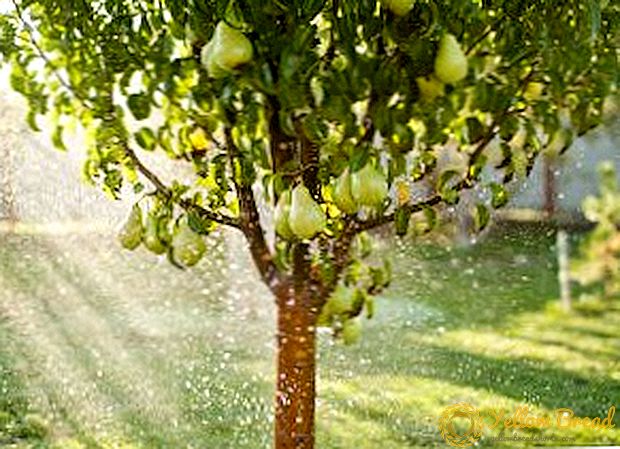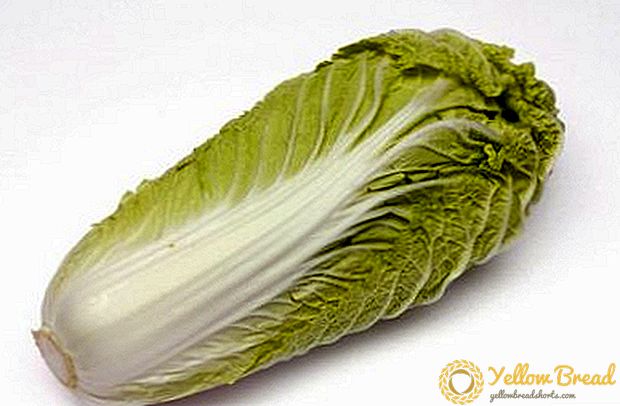 There are plants in nature that both shock and delight people. Of course, such instances are not so common, and fans of various curiosities have to look for them.
There are plants in nature that both shock and delight people. Of course, such instances are not so common, and fans of various curiosities have to look for them.
One of these wonders of nature is amorphofallus, for the successful cultivation of which will have to stock up on knowledge and patience.
- Amorphophallus: plant description
- Optimal conditions for growing in the house
- Location and lighting
- Temperature conditions
- Home Care Tips
- Watering
- Air humidity
- Feedings
- Features care in a dormant period
- How to transplant
- Reproduction of amorphophallus kids
- Disease and Pest Resistance
- Types of amorphophallus
Amorphophallus: plant description
Amorphophallus - Tuberous perennial plant of the genus Aroid. When flowering releases up a long dark purple cob length from 15 to 100 cm. A dark-purple bedspread blooms around the inflorescence. The top of the ear does not form flowers - male and female beginnings are located in the lower part of the inflorescence.

The leaves of this flower are green, tripartite, dissected, at the tips - with a slight sharpening. Under natural conditions, the leaves of amorphophallus reach 1.3 meters in length, house flowers are slightly smaller - up to a meter. Externally, the leaves resemble a palm tree.
After amorphophallus ottsvetet, its leaves die off, and the next season grows even larger and more split.
Optimal conditions for growing in the house
Despite all the exoticism, amorphophallus is unpretentious, and taking care of it at home does not take much time at all and does not require much labor. The main rule - the plant needs to create a comfortable environment. 
Location and lighting
Amorphophallus belong to light-loving plants. They love bright and diffused indirect light. Therefore, it is necessary to grow this plant where there is a sufficient amount of light.
Temperature conditions
For homey amorphophallus, as for most species of this flower, the optimum temperature is + 22-25ºC. At the same time at night, the plant loves a temperature of about + 19-20ºC. However, some species have their own preferences:
- AMP kiusianus (southern Japan) feels bad already at + 25ºC. In the heat of the plant, the foliage quickly dries up and the flowering period is shortened;
- amorfofallus bulbifer feels great at + 15-30ºC. At the same time it grows normally and blooms.

Home Care Tips
Comfortable temperature and lighting is not enough for the normal development of amorphofallus. He also needs a certain mode of watering and feeding.
Watering
In the summer, amorphophallus is watered regularly, as the top layer dries. Moreover, watering is carried out until the water, having passed through the earthen room, is on the pallet. After 30-60 minutes, excess water is drained.
Air humidity
In principle, the humidity of the air for the development of amorphophallus does not play a big role. Basically, the plant is sprayed for hygiene purposes, but the flower loves it very much.
You can spray every day, using the settled soft warm water. 
Feedings
As soon as the first shoots appear in the spring, after 1-1.5 months (and every 2 weeks thereafter), the plant should be fed. First of all, titanic amorphophallus needs phosphorus. Before you feed the plant, the soil must be thoroughly watered.
Features care in a dormant period
In the fall at rest, amorphophallus is transferred to a cool (temperature - about + 10 ° C) dark place and only occasionally moisten the soil. As a rule, the flower rests for several months, and by the end of spring, the first leaf appears.Sometimes the resting season can last until next year.
If you have discovered that a giant tuber has rotted in a giant amorphophallus, it can be reanimated. To do this, remove the affected part with a sharp knife and wash the tuber in a strong solution of potassium permanganate. After that, slices are sprinkled with crushed coal and left for a day for the onion to dry. Next, the tuber is planted in the prepared substrate. 
Store the bulbs in the ground can not. After the leaves are withered, the tubers are pulled out, carefully removed from the ground and looked around. In case a daughter tuber is found, it is neatly separated.
How to transplant
In the spring of tubers can be planted in more spacious pots. At the same time preparing a soil mix, which consists of:
- sod or leaf earth;
- humus;
- peat;
- coarse sand.
Reproduction of amorphophallus kids
The formation of the root system of amorphophallus begins in the upper part of the tuber, therefore, when planting, the bulb is deepened. The growth of the roots is intense and is slowed down only when the top of the flower or leaves appears. 
For transplanting babies use small containers, adult large onions need more spacious pots.

Disease and Pest Resistance
In principle, amorphophallus is considered a strong plant. However, at a young age, it can be affected by various pests: a nematode, mealybug, aphids and spider mites. Since their presence in the soil can only be determined by the painful appearance of the plant, It is necessary to carry out such preventive measures:
- The soil for planting must be decontaminated.
- Regularly inspect and separate diseased tubers from healthy ones.
Types of amorphophallus
In nature, there are about 100 (according to some sources - more than 200) species of amorphophallus, and in most cases they are common in a limited range. There are plants in size - dwarf and giant, and by habitat. Amorphophallus is also subdivided into evergreen species, as well as a change of active and quiet period. The most common are subspecies:
- Amorphophallus cognac. Differs a type of a tuber - slightly flat. The leaves of this flower are large - up to 80 cm, dark olive with light dark or light spot. The stem of the flower grows to 50-70 cm. Heating during flowering reaches + 40ºC. Primary colors are reddish purple and burgundy.

- Amorphophallus lukovitsenosny. It has a spherical tuber with a diameter of 7-8 cm. The only leaf is a dark olive stalk. The stem of a flower grows up to 30 cm.

- Amorphophallus Rivera. Tuber can be of different sizes - from 7 to 25 cm. The cutting grows to 40-80 cm, although there are specimens with one and a half meter cuttings. Peduncle grows to a meter, and the coverlet - up to 30 cm.
- Amorphophallus Titanium. The largest and most foul-smelling flower. It grows up to 2.5 meters in height and 1.5 meters in width. Inflorescence - maroon shade.

Despite the fact that some people are frightened by the incredible smell of a flower during its flowering, many are fascinated by its appearance. Therefore, the right choice of variety, competent care and awareness of how often amorphophallus blooms will allow you to have such an unusual flower at home without any inconvenience.






